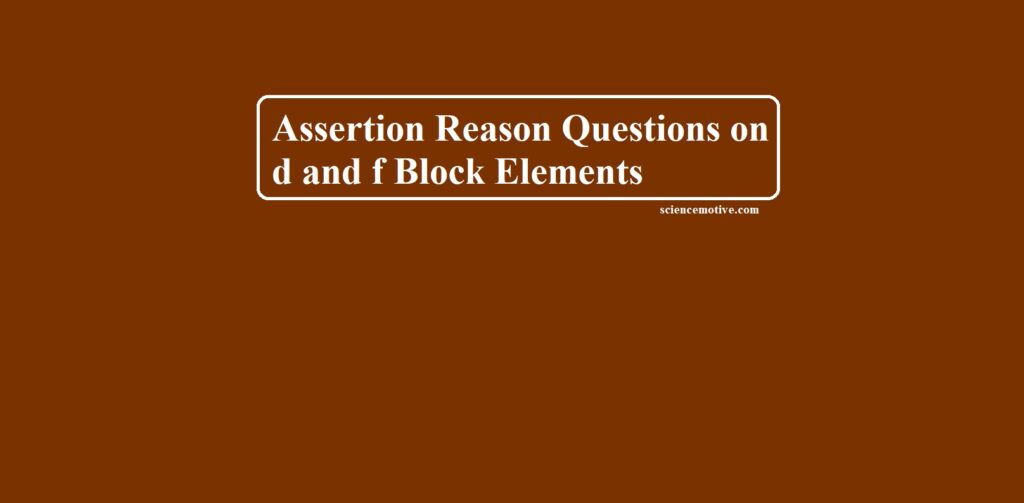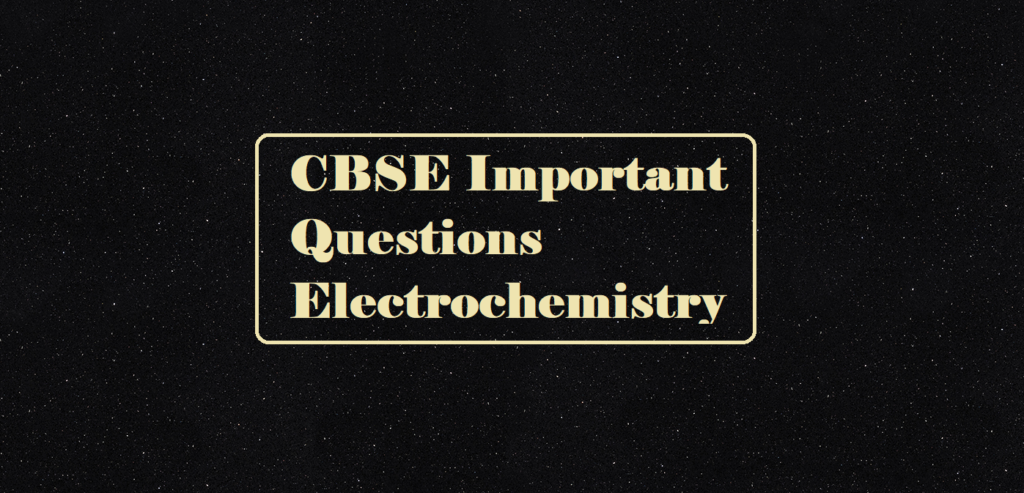Assertion Reason Questions on d and f Block Elements
Assertion Reason Questions on d and f Block Elements
(i) Both assertion and reason are true, and the reason is the correct explanation of the assertion.
(ii) Both assertion and reason are true but the reason is not the correct explanation of assertion.
(iii) Assertion is not true but the reason is true.
(iv) Both assertion and reason are false.
Que 1. Assertion: Transition metals show variable valence.
Reason: Due to a large energy difference between the ns2 and (n-1)d electrons.
Ans 1. (iv)
Que 2. Assertion: In transition elements, the ns orbital is filled up first and (n-1)d afterwards. During ionization, ns electrons are lost prior to (n-1)d electrons.
Reason: The effective nuclear charge felt by (n-1)d electrons is higher as compared to that by ns electrons.
Ans 2. (i)
Que 3. Assertion: It is not possible to obtain anhydrous ZnCl2 by heating ZnCI2.2H2O.
Reason: ZnCI2.2H2O. undergoes hydrolysis to produce Zn(OH)2 and HCI.
Ans 3. (i)
Que 4. Assertion: Cuprous ion (Cu+)has unpaired electrons while cupric ion (Cu++) does not
Reason: Cuprous ion (Cu+) is colourless whereas cupric ion (Cu++) is blue in the aqueous solution.
Ans 4. (iii)
Que 5. Assertion: The aqueous solution of FeCI3 is basic in nature
Reason: FeCI3 hydrolyses in water.
Ans 5. (iii)
Assertion Reason Questions on d and f Block Elements
Que 6. Assertion: Copper metal gets readily corroded in an acidic aqueous solution.
Reason: Free energy change for this process is negative.
Ans 6. (iii)
Que 7. Assertion: The addition of ammonium chloride to a solution containing ferric and magnesium ions is essential for selective precipitation of ferric hydroxide by aqueous ammonia.
Reason: The function of ammonium chloride is to suppress the Ionization of NH4OH and thus check the precipitation of Mg(OH)2.
Ans 7. (i)
Que 8. Assertion: Pure iron is not used for making tools and machines.
Reason: Pure iron is hard.
Ans 8. (iii)
Que 9. Assertion: Fe2+ is paramagnetic.
Reason: Fe2+ contains four unpaired electrons.
Ans 9. (i)
Que 10. Assertion: Promethium is a man-made element.
Reason: It is radioactive and has been prepared by artificial means.
Ans 10. (I)
Assertion Reason Questions on d and f Block Elements
Que 11. Assertion: Cu2+ iodide is not known.
Reason: Cu2+ oxidises I– to iodine.
Ans 11. (i)
Que 12. Assertion: Separation of Zr and Hf is difficult.
Reason: Because Zr and Hf lie in the same group of the periodic table.
Ans 12. (ii)
Que 13. Assertion: Actinoids form relatively less stable complexes as compared to lanthanoids.
Reason: Actinoids can utilise their 5f orbitals along with 6d orbitals in bonding but lanthanoids do not use their 4f orbital for bonding.
Ans 13. (iii)
Que 14. Assertion: Cu cannot liberate hydrogen from acids.
Reason: Because it has positive electrode potential.
Ans 14. (i)
Que 15. Assertion: The highest oxidation state of osmium is +8.
Reason: Osmium is a 5d-block element.
Ans 15. (ii)
Assertion Reason Questions on d and f Block Elements
Que 16. Assertion: Tungsten has a very high melting point.
Reason: Tungsten is a covalent compound.
Ans 16. (iii)
Que 17. Assertion: Cuprous salts are diamagnetic.
Reason: Cu+ has 3d filled subshell.
Ans 17. (i)
Que 18. Assertion: Zn2+ and Cu2+ are colourless.
Reason: Both Zn2+ and Cu2+ contain 3d filled subshells.
Ans 18. (i)
Que 19. Assertion: There is a continuous decrease in the size of lanthanoids.
Reason: Lanthanoids shows lanthanoid contraction.
Ans 19. (i)
Que 20. Assertion: Cu2+ iodide is not known.
Reason: Cu2+ oxidises I– to iodine.
Ans 20. (i)
Assertion Reason Questions on d and f Block Elements



